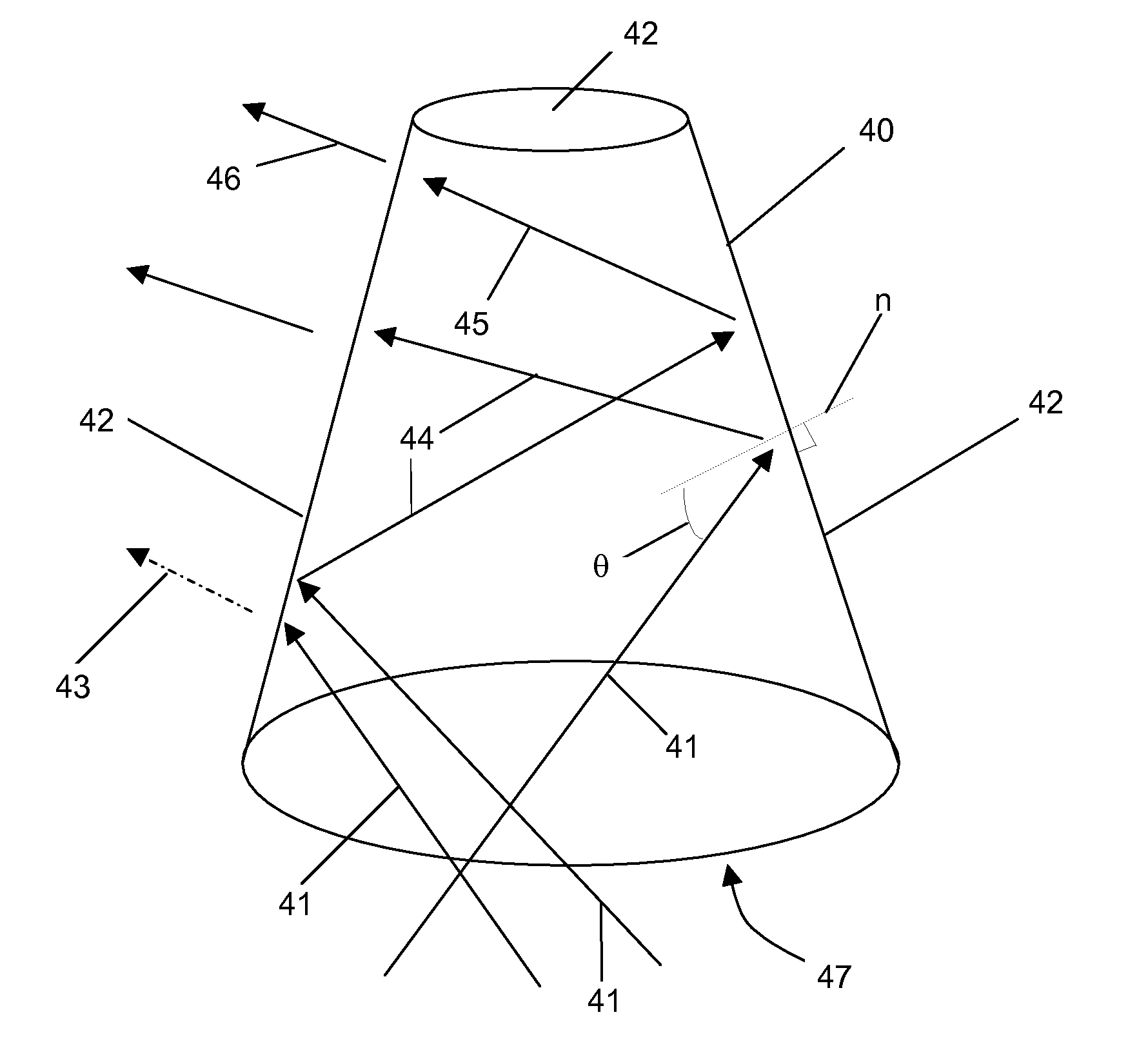High light extraction efficiency nitride based light emitting diode by surface roughening
a technology of light-emitting diodes and gallium nitride, which is applied in the direction of basic electric elements, electrical equipment, semiconductor devices, etc., can solve the problems of little room for improvement over these values, difficult to increase internal quantum efficiency, and crystal quality and epitaxial layer structure, etc., to achieve increased incidence angles, small refractive index, and increased chance
- Summary
- Abstract
- Description
- Claims
- Application Information
AI Technical Summary
Benefits of technology
Problems solved by technology
Method used
Image
Examples
Embodiment Construction
[0033]In the following description of the preferred embodiment, reference is made to the accompanying drawings which form a part hereof, and in which is shown by way of illustration a specific embodiment in which the invention may be practiced. It is to be understood that other embodiments may be utilized and structural changes may be made without departing from the scope of the present invention.
TECHNICAL DESCRIPTION
[0034]The present invention describes a technique for increasing the light extraction efficiency from a nitride based LED, which involves photolithography and plasma-assisted chemical dry etching. Through increasing light extraction, subsequent improvement of efficiency is thus expected.
[0035]In one embodiment of the present invention, the freestanding GaN substrate surface of the opposite side of the LED growth front is roughened. After the device is fabricated, the LED is then placed within a shaped optical element.
[0036]FIG. 2 shows a schematic representation of a su...
PUM
 Login to View More
Login to View More Abstract
Description
Claims
Application Information
 Login to View More
Login to View More - R&D
- Intellectual Property
- Life Sciences
- Materials
- Tech Scout
- Unparalleled Data Quality
- Higher Quality Content
- 60% Fewer Hallucinations
Browse by: Latest US Patents, China's latest patents, Technical Efficacy Thesaurus, Application Domain, Technology Topic, Popular Technical Reports.
© 2025 PatSnap. All rights reserved.Legal|Privacy policy|Modern Slavery Act Transparency Statement|Sitemap|About US| Contact US: help@patsnap.com



